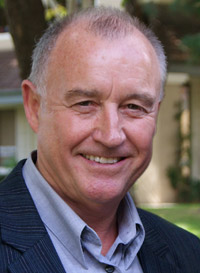A healthy growing church must take the necessary steps to stay off the plateaus. Growth ceilings are found at different stages of a church’s development. There are twelve key areas needed for healthy long term growth, below are the first six. Next month you will receive the next six areas.
1. We Need Leaders Who Never Stop Growing: “David went on, and grew great...” (2 Samuel 5:10 KJV). Leadership develops daily, not in a day. You develop the right habits and the habits develop you.
Have a personal growth plan and make sure your team has a personal growth plan. To lead you must know where you are going. A good leader must be able to think strategically like a good chess player. The captain of the Queen Mary said, "a good captain thinks at least a mile ahead."
2. We Must Win Souls and Make Disciples. Have an outward focused strategy to reach every available person, at every available time by every available means with the gospel of Jesus Christ. Use your imagination and be creative. Study book four of our Equipping Series called Outreach and Evangelism, take note of the nine different methods of evangelism mentioned.
Every church needs a strategy on how to win souls, then take them from salvation to spiritual maturity and onto significant ministry. As new Christians commit themselves to be accountable to more mature believers, true discipleship and mentorship can be facilitated. The Church at Thessalonica is a great example of a successful discipleship process:
- Paul cared for the believers as a mother cares for her children (1 Thes. 2:7-8).
- Paul became a role model for the believers (9-10).
- Paul gave individual attention and instruction as a father (11-12).
- Paul taught them the Word. Biblical truth is an essential component of Biblical discipleship (13).
3. Find, Train, Manage and Release Leaders (Ephesians 4:11-16). Here are three steps to an effective leadership training program:
- A conscious plan to develop leaders (See Leadership Development, August 2010 Newsletter, by Dr Hill).
- A list of potential positions. The best way to do this is with an organizational flow chart.
- A list of potential leaders. Give much thought and prayer into matching up people with positions and you will be amazed how the Holy Spirit will guide you in divine placement.
4. Have Structures That Remains Flexible. View your structure annually and change virtually anything that hinders growth and efficiency. Growth demands change; structure for growth (Acts 6:1-8; Exodus 18). Change any program that does not reach its expected potential. Stay fresh and relevant!
5. Build Sub-Congregations (Small Groups and Special Interest Groups). Sub-congregations are groups with an affinity geographically, or with respect to location, similar tasks in a congregation, age, education or professional interests (Music, Media, Sunday school teachers and helpers, youth, helps and hospitality, seniors, etc.). The larger a Church grows the more sub-congregations will appear. They help connect people to people, the Word and ministry; they make a large church small (Acts 20:20).
5. Diversified Staffing. Staffing for anticipated growth is a step of faith. Perhaps the greatest need after a senior pastor is an administrative/volunteer coordinator. Perhaps next would be a youth and/or music minister, followed by a children’s minister and helps. The smaller the church, the more diverse the job description, the larger the church, the more specialized you can be.
It is time to think and plan strategically, and structure for solid long-term growth. Which one these areas need the most attention in your church? Make that a prayer focus for the next six months; then begin to take action, and watch as growth takes place. Healthy churches always grow!
Yours for long term real Church growth,
 Dr George Hill
Dr George Hill
President/Founder VCI International
